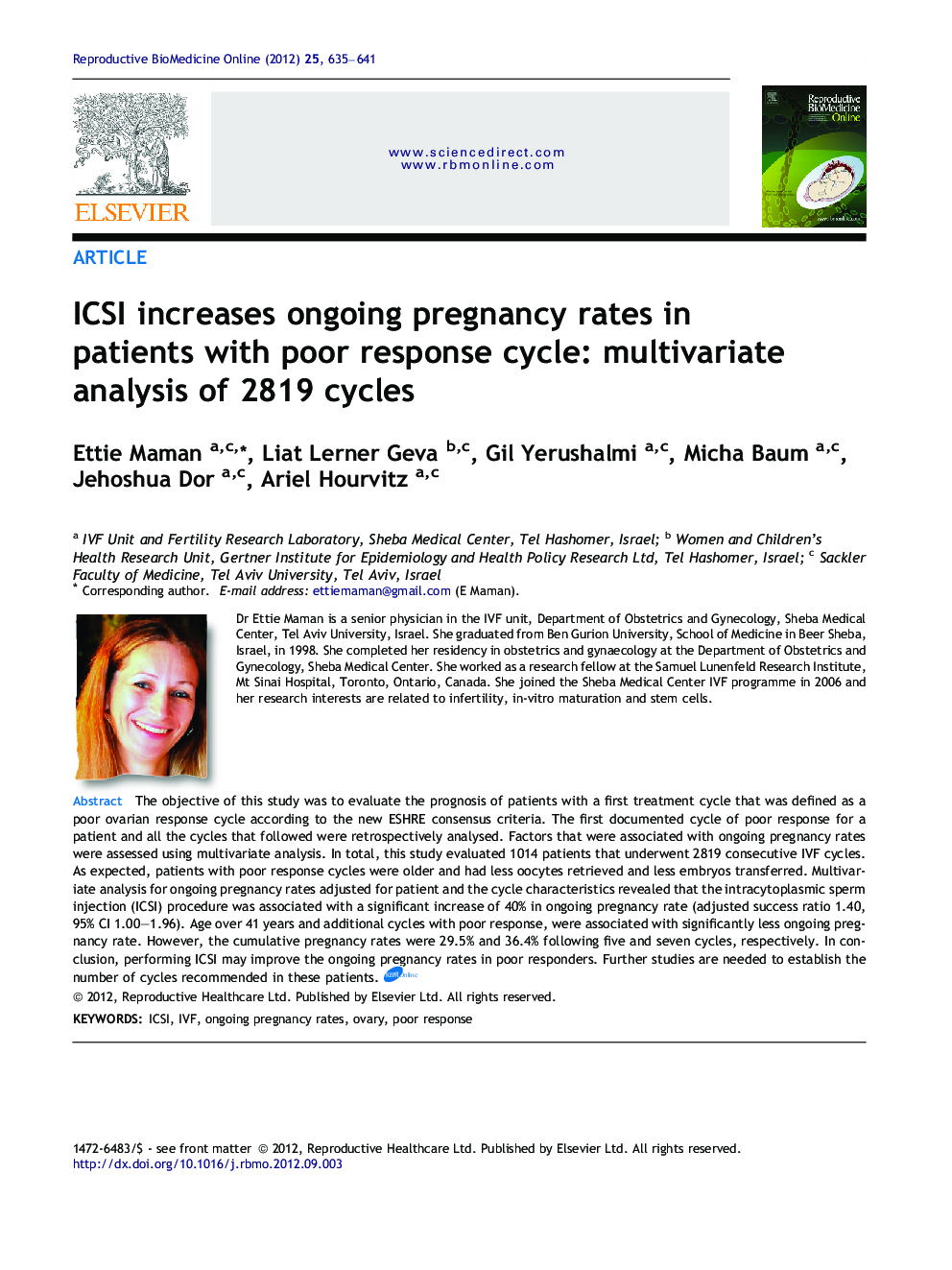| Article ID | Journal | Published Year | Pages | File Type |
|---|---|---|---|---|
| 3970437 | Reproductive BioMedicine Online | 2012 | 7 Pages |
The objective of this study was to evaluate the prognosis of patients with a first treatment cycle that was defined as a poor ovarian response cycle according to the new ESHRE consensus criteria. The first documented cycle of poor response for a patient and all the cycles that followed were retrospectively analysed. Factors that were associated with ongoing pregnancy rates were assessed using multivariate analysis. In total, this study evaluated 1014 patients that underwent 2819 consecutive IVF cycles. As expected, patients with poor response cycles were older and had less oocytes retrieved and less embryos transferred. Multivariate analysis for ongoing pregnancy rates adjusted for patient and the cycle characteristics revealed that the intracytoplasmic sperm injection (ICSI) procedure was associated with a significant increase of 40% in ongoing pregnancy rate (adjusted success ratio 1.40, 95% CI 1.00–1.96). Age over 41 years and additional cycles with poor response, were associated with significantly less ongoing pregnancy rate. However, the cumulative pregnancy rates were 29.5% and 36.4% following five and seven cycles, respectively. In conclusion, performing ICSI may improve the ongoing pregnancy rates in poor responders. Further studies are needed to establish the number of cycles recommended in these patients.Patients with poor ovarian response cycles are currently the most challenging group of fertility patients. We are yet far from understanding the factors which cause reduced ovarian response and further away from finding a solution to this painful problem. In this work, we present that with current available treatment modalities, the results can be improved. We show that performing intracytoplasmic sperm injection and implementation of additional number of treatment cycles may improve the ongoing pregnancy rates of patients with a first treatment cycle that is defined as a poor ovarian response cycle. In addition, we investigated the cumulative pregnancy rates in this group and the effect of performing a number of treatment cycles.
